The birds of Brittany are as varied and abundant as the beautiful landscapes of this region in France. From the coastal cliffs of the north to the rolling hills of the interior, Brittany is home to a wide variety of birds.
Some of the most iconic species include the chough, the marsh harrier, and the little egret. In addition to these iconic species, Brittany is home to a wide variety of other birds, including rare species such as the great bustard, the black kite, and the short-toed eagle.
With its diverse habitats and its abundance of bird species, Brittany is a paradise for birders and nature enthusiasts alike.
1. Stork
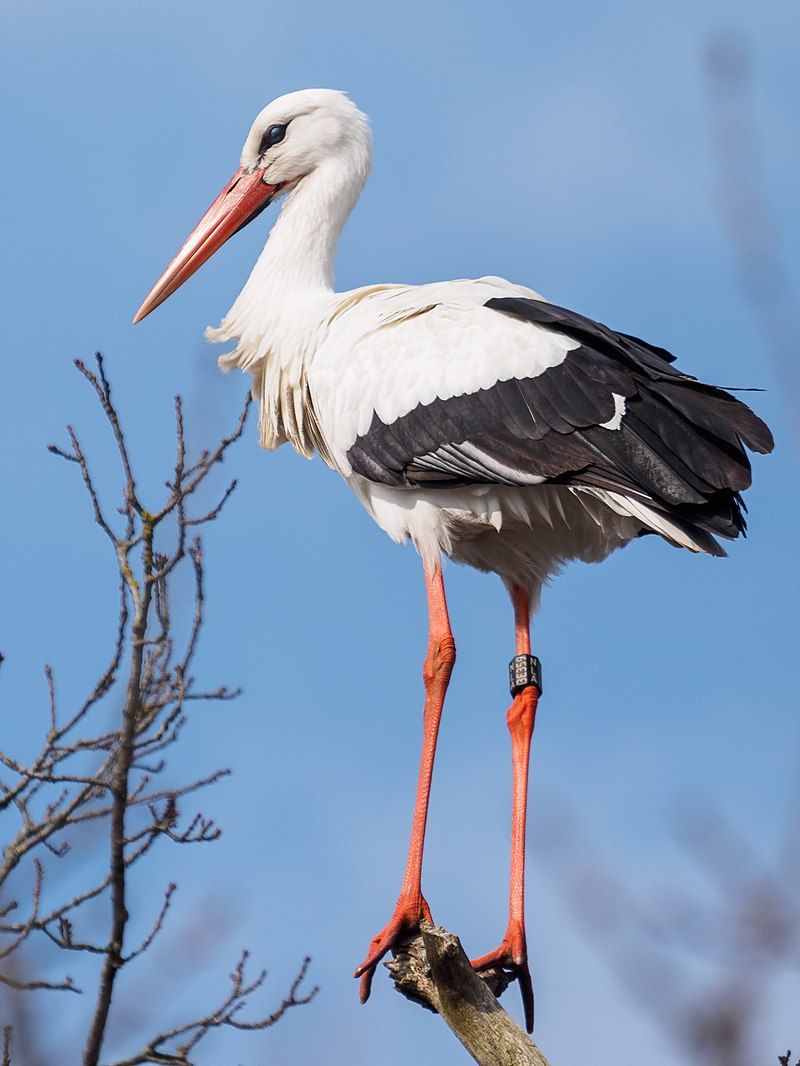
Storks are large, long-legged and long-necked wading birds, with long, stout bills. They belong to the family Ciconiidae and are part of the order Ciconiiformes.
This order originally included a range of other bird families, such as herons and ibises, but these birds have since been reclassified into different orders. Storks are renowned for their ability to wade in shallow water and catch small fish, frogs, and other aquatic animals.
They also have a distinctive white plumage, with some species having black markings. Storks are found all over the world and are a familiar sight in both wetland and urban habitats.
They usually nest in large colonies, and their presence is often a sign of a healthy environment.
| Kingdom | Animalia |
| Phylum | Chordata |
| Class | Aves |
| Clade | Aequornithes |
| Order | Ciconiiformes |
| Family | Ciconiidae |
2. White Stork
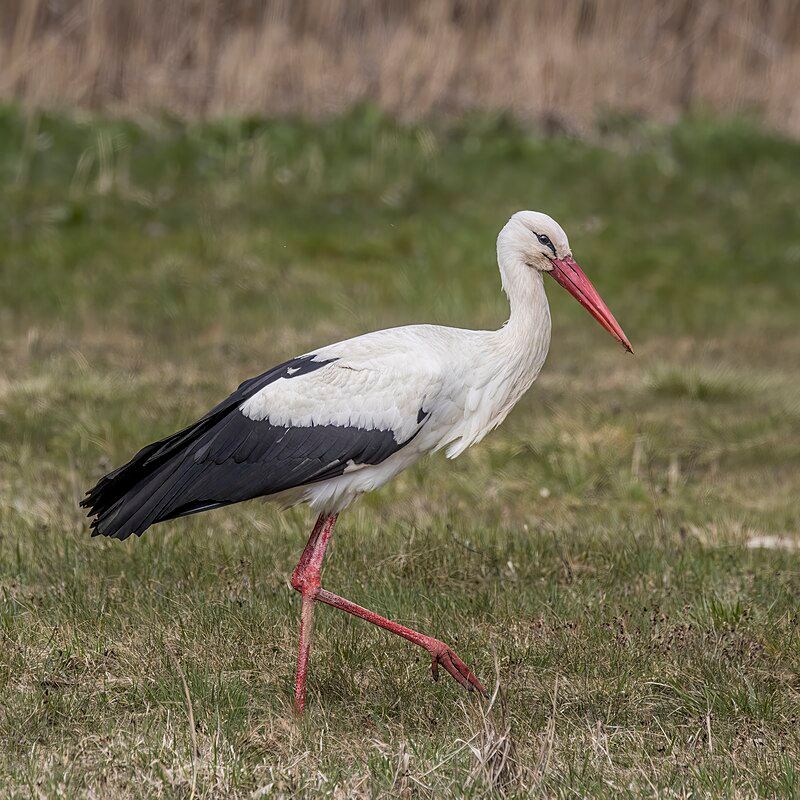
The white stork is a beautiful species belonging to the Ciconiidae family of birds. It has a striking white plumage, with contrasting black wings that make it quite a majestic sight.
An adult white stork is typically between 100 and 115 centimeters long from the tip of its beak to the end of its tail, and boasts a wingspan between 155 and 215 centimeters. Its long, red legs and beak add to its unique appearance, making it a truly remarkable species.
The white stork is a migratory species and can often be seen flying in large flocks, especially during the winter months. They feed mainly on small animals such as frogs, fish, and insects, and spend most of their time foraging in wetlands and shallow waters.
In some parts of Europe, the white stork is a symbol of good luck and fertility and is often seen nesting on the rooftops of homes. All in all, the white stork is a unique and fascinating species that is sure to bring good luck to anyone lucky enough to spot it.
| Kingdom | Animalia |
| Phylum | Chordata |
| Class | Aves |
| Order | Ciconiiformes |
| Family | Ciconiidae |
| Genus | Ciconia |
| Species | C. ciconia |
3. Northern Gannet
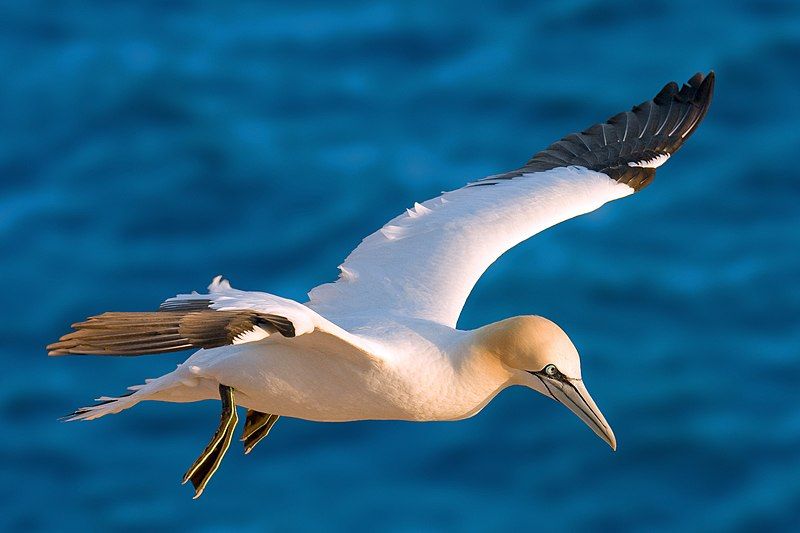
The northern gannet is a large seabird native to the Atlantic coastline, stretching from Western Europe to Northeastern North America. It belongs to the Sulidae family of gannets, making it the largest species of the group.
This seabird is the largest of its kind in the northern Atlantic, with males and females looking the same. Its plumage is predominantly white, with a blackish-brown wingspan and a yellowish-brown head.
The northern gannet is an impressive sight, with its long, curved beak and powerful wingspan. It is a powerful and agile flier, often diving from great heights into the ocean in search of its prey. It feeds mainly on fish and other marine life, along with some plant material.
It nests in large colonies on cliff ledges, typically located near the ocean. The northern gannet is a magnificent creature that is a welcome sight to observers along the Atlantic coast.
| Kingdom | Animalia |
| Phylum | Chordata |
| Class | Aves |
| Order | Suliformes |
| Family | Sulidae |
| Genus | Morus |
| Species | M. bassanus |
4. Cormorants
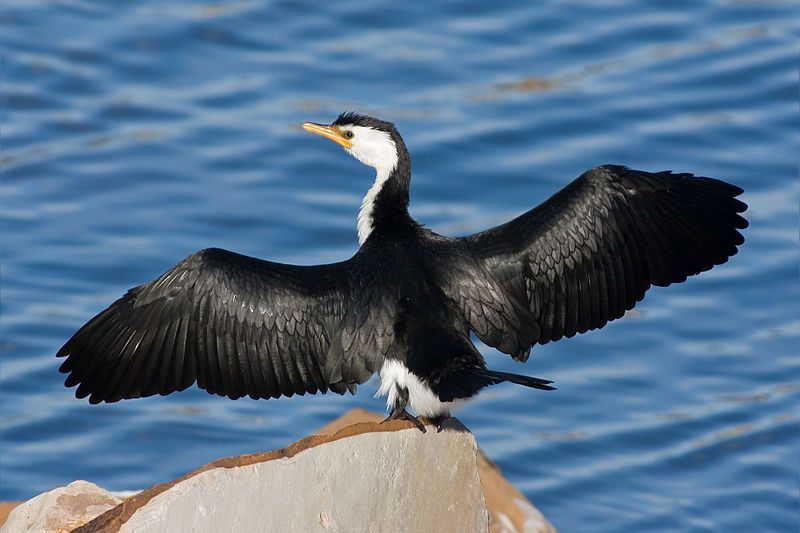
Phalacrocoracidae is a large family of birds found in aquatic environments around the world. These birds are commonly known as cormorants and shags, and are noted for their ability to dive deep in search of food.
There are around 40 species of Phalacrocoracidae, and their taxonomy has been subject to debate in the past. However, in 2021 the International Ornithologists’ Union (IOU) adopted a consensus taxonomy of seven different genera.
These seven genera are Phalacrocorax, Leucocarbo, Microcarbo, Nannopterum, Phalacrocorax, Plotus, and Stictocarbo. Each of these genera is further divided into numerous species, which vary in size, behavior, and other characteristics.
The IOU’s adoption of this taxonomy provides a unified system by which scientists can accurately and reliably identify and categorize the different species of Phalacrocoracidae.
| Kingdom | Animalia |
| Phylum | Chordata |
| Class | Aves |
| Order | Suliformes |
| Family | Phalacrocoracidae |
5. European Rock Pipit
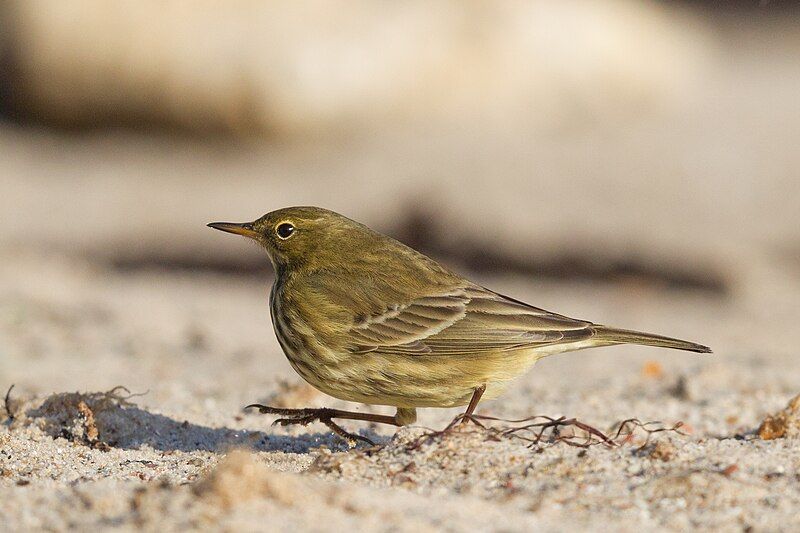
The European rock pipit is a small passerine bird that lives in western Europe, primarily inhabiting rocky coasts. It is identifiable by its streaked greyish-brown upperparts and buff underparts.
This coloring allows it to blend in with the rocky environment, providing camouflage and protection from predators. In terms of physical appearance, the European rock pipit is similar to other European pipits.
However, its coloring is unique, which helps to distinguish it from other species. In addition, its habitat, which is the rocky coasts of Western Europe, is exclusive to the species.
The European rock pipit is an omnivore, feeding on insects and other invertebrates as well as seeds and berries. It is a ground-dwelling species, foraging for food on the ground and rarely taking to the air for short flights.
It also builds its nest on the ground, among rocks or in small crevices. The nest is built from grasses and is lined with feathers. The European rock pipit is considered to be a common species, with a stable population.
It is found across Western Europe, from the United Kingdom to Portugal, as well as parts of North Africa. As its habitat is rocky coasts, it is rarely seen in other habitats.
| Kingdom | Animalia |
| Phylum | Chordata |
| Class | Aves |
| Order | Passeriformes |
| Family | Motacillidae |
| Genus | Anthus |
| Species | A. petrosus |
6. Middle-Spotted Woodpecker

The middle-spotted woodpecker is a species of woodpecker found in Europe. It is a small bird, usually with a red crown, grey back and wings, and white cheek patches. It is a member of the genus Dendrocoptes, which includes all woodpeckers.
The middle spotted woodpecker is an active forager, feeding mostly on insects, larvae, and other invertebrates. It will also feed on seeds, nuts, fruit, and berries.
The middle spotted woodpecker builds its nest in tree trunks and cavities, often excavating the wood to make nesting cavities. It will also use old nest sites of other birds. The middle spotted woodpecker is very vocal, with a variety of calls and drumming sounds.
It is a shy bird, but can become quite tame when given food. The middle spotted woodpecker is an important species of woodpecker, helping to keep forests healthy by controlling insect populations and helping to spread seeds.
| Kingdom | Animalia |
| Phylum | Chordata |
| Class | Aves |
| Order | Piciformes |
| Family | Picidae |
| Genus | Dendrocoptes |
| Species | D. medius |
7. Brant
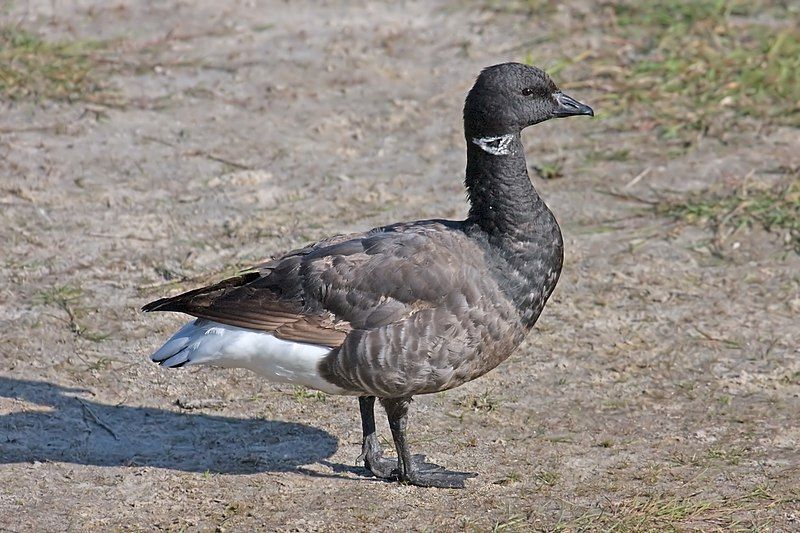
The brant or Brent goose is a small species of goose that belongs to the genus Branta. There are three subspecies of the brant goose, each one wintering along temperate-zone sea-coasts and breeding on high-Arctic tundra.
This species is a popular winter visitor to many coastal areas and has a wide distribution across the globe, including North America, Europe, and Asia. The Brent oilfield is a major oilfield situated in the North Sea off the coast of Scotland.
It is named after the brant or Brent goose, a species of bird that is commonly found in the North Sea. This oilfield was discovered in 1971 and is one of the biggest oil fields in the world. It has been estimated that the oilfield contains around 4.7 billion barrels of oil.
The oilfield has been producing since 1976 and is still considered to be a major source of oil for the United Kingdom.
| Kingdom | Animalia |
| Phylum | Chordata |
| Class | Aves |
| Order | Anseriformes |
| Family | Anatidae |
| Genus | Branta |
| Species | B. bernicla |
8. Common Shelduck
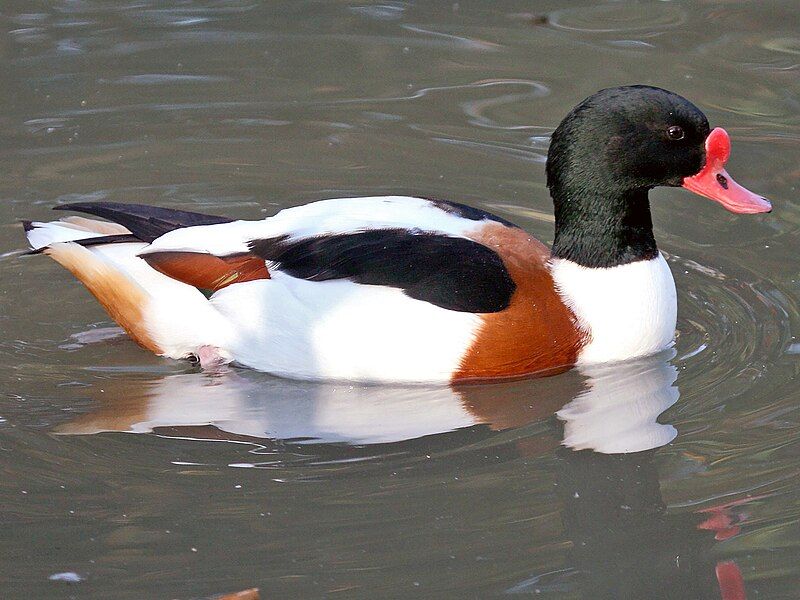
The common shelduck is a species of waterfowl belonging to the Tadorna genus. It is found in a large area of the Palearctic region (including Europe and Siberia). It breeds during temperate seasons and winters in subtropical climates.
During the winter season, the common shelduck can also be spotted in the Maghreb, a region in Northern Africa. This species of waterfowl is very widespread and common in this region. Its distribution is a result of its ability to adapt to different climates and habitats.
The common shelduck has a wide range of food sources, which allows it to survive in a variety of habitats. Its diet consists of aquatic invertebrates, seeds, and plant material. Its habits include foraging in shallow waters and mudflats for food.
It also frequents flooded pastures and grazes on land. During the breeding season, the common shelduck forms monogamous pair bonds and builds its nests in hollows or near water.
| Kingdom | Animalia |
| Phylum | Chordata |
| Class | Aves |
| Order | Anseriformes |
| Family | Anatidae |
| Genus | Tadorna |
| Species | T. tadorna |
9. European Herring Gull
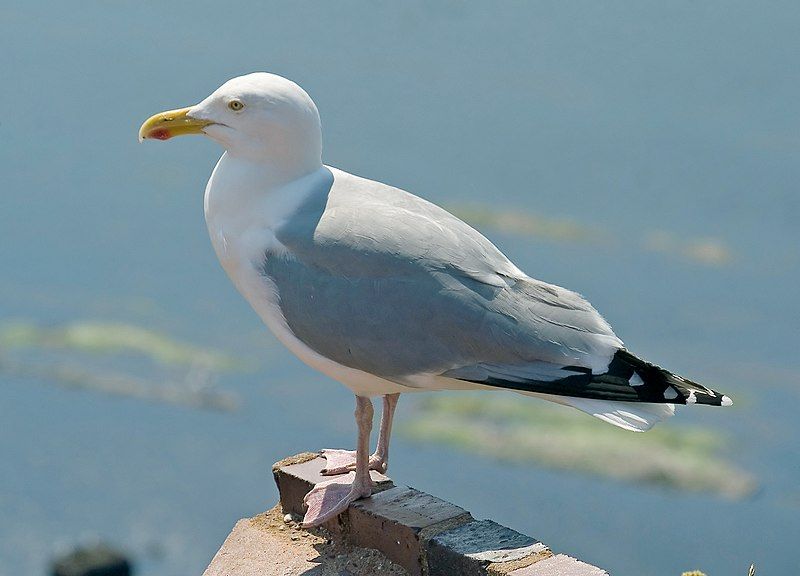
The European herring gull is a large species of seagull, typically reaching up to 66 cm in length. It is commonly found in coastal regions throughout Western Europe, but its abundance has decreased in recent years.
This gull species is widely distributed across Northern Europe, Western Europe, Central Europe, Eastern Europe, Scandinavia, and the Baltic states, where it breeds each year.
It is particularly well-known for its loud call and scavenging habits, often seen gathering around popular tourist spots in search of food scraps.
The European herring gull is an important part of the food chain, consuming insects, small animals, and carrion, as well as scavenging for human-made food sources. It is also popular among birdwatchers and photographers, due to its striking white, grey, and black plumage.
| Kingdom | Animalia |
| Phylum | Chordata |
| Class | Aves |
| Order | Charadriiformes |
| Family | Laridae |
| Genus | Larus |
| Species | L. argentatus |
10. Black-Headed Gull
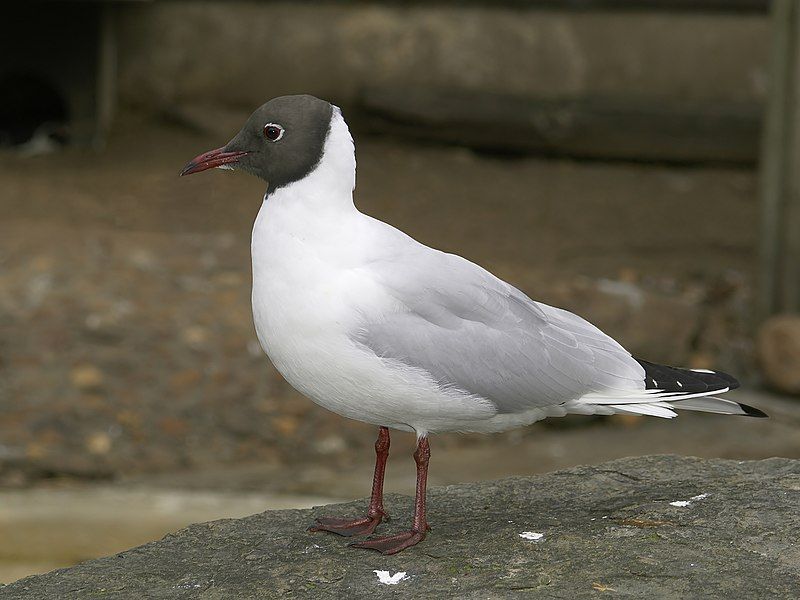
The black-headed gull is a species of small gull found in much of the Palearctic region, which encompasses parts of Europe, northern Africa, and parts of Asia. In addition, there is a population of this species found in coastal eastern Canada.
Most of the black-headed gull population migrates south during the winter months, but some individuals have been known to remain in the warmer regions of Western Europe.
This species is one of the most widespread gulls in the world, with a breeding range stretching from the shores of the Atlantic Ocean to beyond the Urals.
Its numbers have increased significantly over the last few decades, due to the expansion of suitable habitats such as reservoirs, landfills, and urban areas.
| Kingdom | Animalia |
| Phylum | Chordata |
| Class | Aves |
| Order | Charadriiformes |
| Family | Laridae |
| Genus | Chroicocephalus |
| Species | C. ridibundus |
11. Great Black-Backed Gull
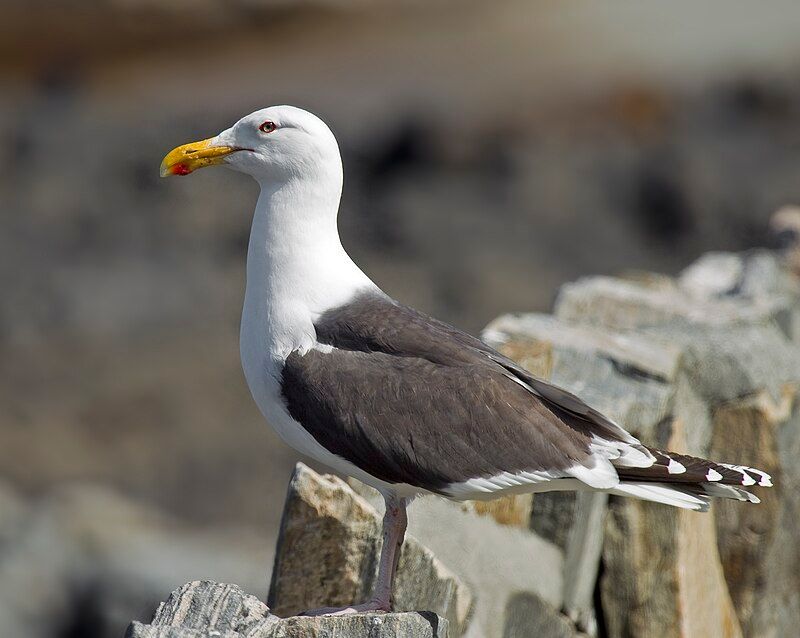
The great black-backed gull is a majestic bird that stands out amongst its peers. It is the largest species of gull in the family, and is a dominant figure along the Atlantic coast.
The Cornell Lab of Ornithology describes it as the “king of the Atlantic waterfront,” an apt description for this powerful predator. Not only does it hunt for food on its own, but it is also known to be quite a pirate, stealing prey from other birds.
It is also an opportunistic scavenger, taking advantage of easy meals when it can. This bird is truly an impressive sight to behold, and its ferocity and strength are awe-inspiring.
| Kingdom | Animalia |
| Phylum | Chordata |
| Class | Aves |
| Order | Charadriiformes |
| Family | Laridae |
| Genus | Larus |
| Species | L. marinus |
12. Short-Toed Treecreeper
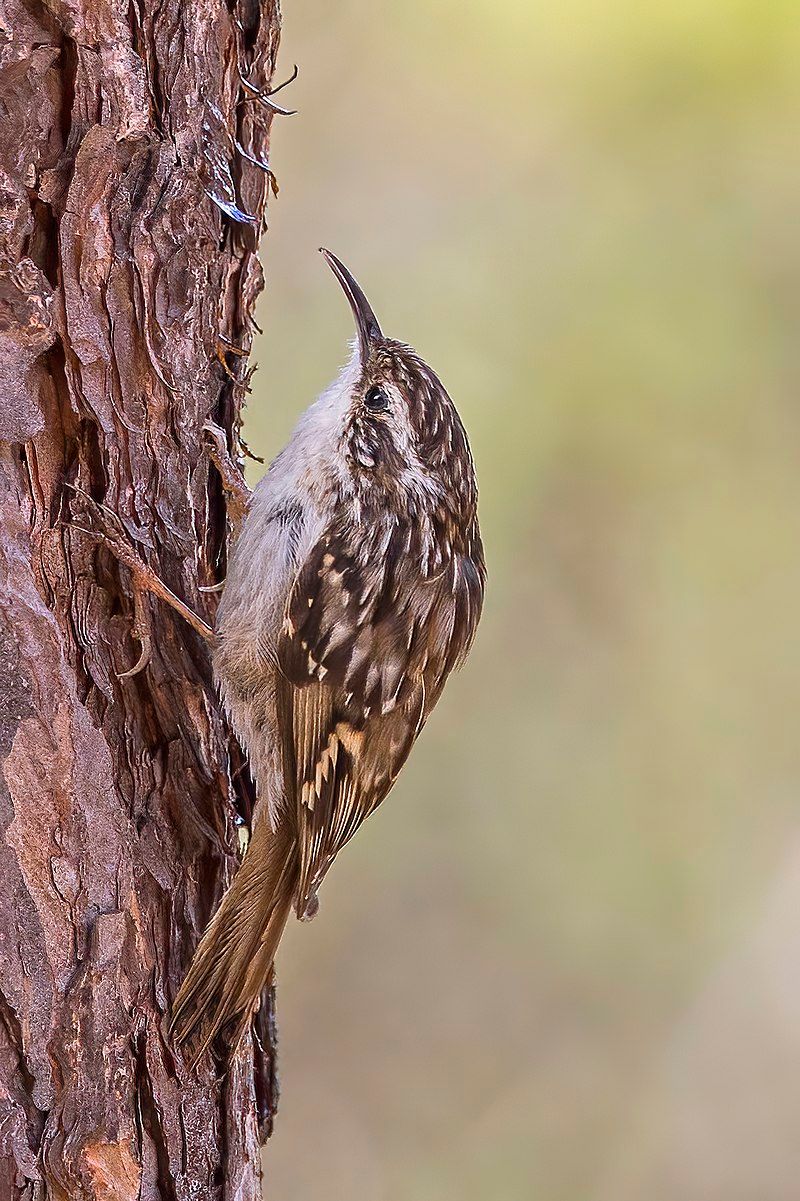
The short-toed treecreeper is a species of small passerine bird which is found across Europe and North Africa in warm woodlands.
This species is generally more distributed in the south of Europe than the common treecreeper, another species of treecreeper found in the same regions. As both species have similar features, it can be difficult to distinguish between them in places where they both inhabit.
The short-toed treecreeper has a pale brown upper body with white underparts and a white stripe above the eye, while the common treecreeper has a more grey-brown upper body and a white stripe above its eye.
Both species have a long, curved bill and a long tail, and they will often climb up tree trunks searching for insects and larvae.
| Kingdom | Animalia |
| Phylum | Chordata |
| Class | Aves |
| Order | Passeriformes |
| Family | Certhiidae |
| Genus | Certhia |
| Species | C. brachydactyla |
13. Water Rail
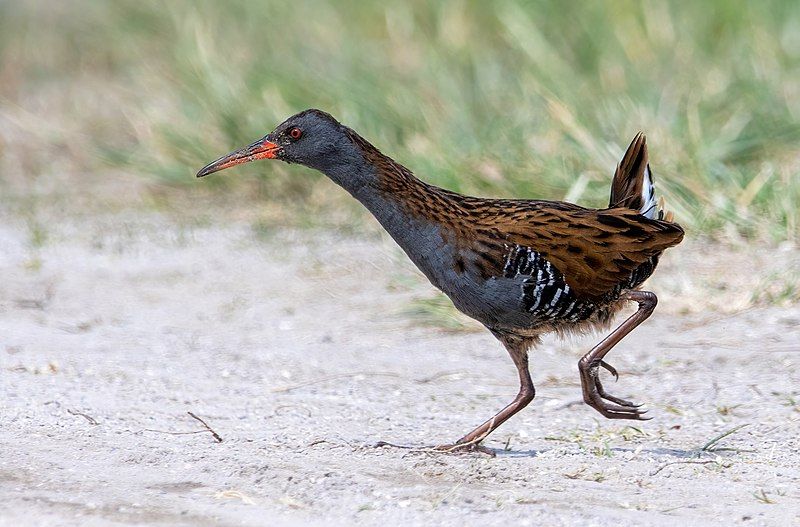
The water rail is a type of bird in the rail family. It is found in a variety of wetlands across Europe, Asia, and North Africa, and prefers areas with plenty of vegetation.
Populations living in the northern and eastern regions of its range tend to be migratory, while those in the warmer parts of its breeding range are permanent residents. They will stay in the same area all year round.
This species of rail is an important part of the local ecosystem, providing food for other animals and helping to maintain the balance of nature. Its presence is essential for the health of the wetland habitats it inhabits.
| Kingdom | Animalia |
| Phylum | Chordata |
| Class | Aves |
| Order | Gruiformes |
| Family | Rallidae |
| Genus | Rallus |
| Species | R. aquaticus |
14. Ruddy Turnstone
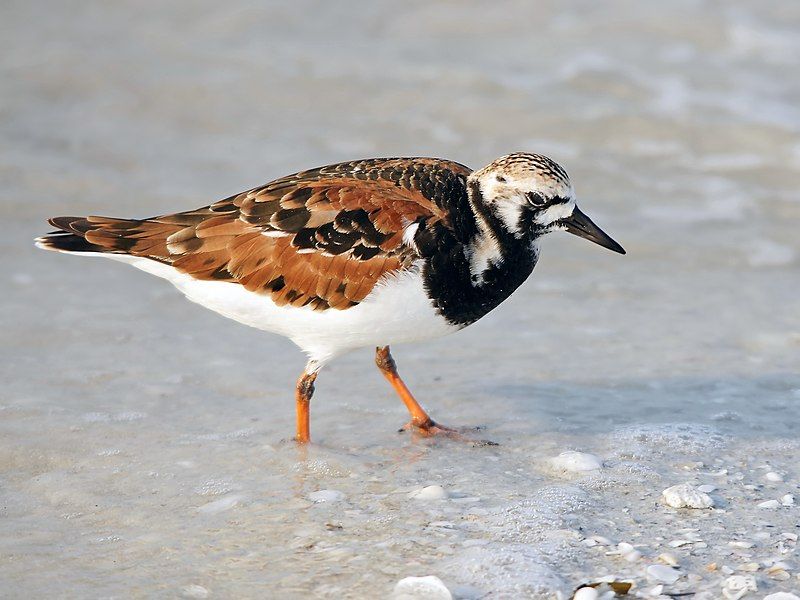
The ruddy turnstone is a species of bird that can be found all over the world. It is a small wading bird, and is one of two species in the genus Arenaria.
It is a member of the sandpiper family Scolopacidae, although it was previously classified in the plover family Charadriidae. The ruddy turnstone is a medium-sized shorebird, measuring approximately 10-12 inches in length. It has a short, thick, orange-brown bill and legs.
Its upperparts are reddish-brown, while the underparts are white. Its distinctive black and white wings have a black-and-white pattern, with white spots on the upper wing and black spots on the underwing. It has a white-spotted black back, which is visible in flight.
The ruddy turnstone is an omnivorous feeder, eating a variety of food items including worms, insects, crustaceans, and other invertebrates. It is often seen foraging on mudflats, grassy areas, and beaches.
It breeds in coastal areas of the northern hemisphere and spends the winter in southern regions. The ruddy turnstone is an important species to many bird and wildlife conservation efforts.
As a migratory species, it is a valuable indicator of the health of wetland and coastal habitats. It is also an important food source for many predators, including gulls, hawks, and owls.
Overall, the ruddy turnstone is an important species of bird that plays an important role in many ecosystems. It is a cosmopolitan species, found in many parts of the world, and is an important part of many conservation efforts.
| Kingdom | Animalia |
| Phylum | Chordata |
| Class | Aves |
| Order | Charadriiformes |
| Family | Scolopacidae |
| Genus | Arenaria |
| Species | A. interpres |
15. Great Cormorant
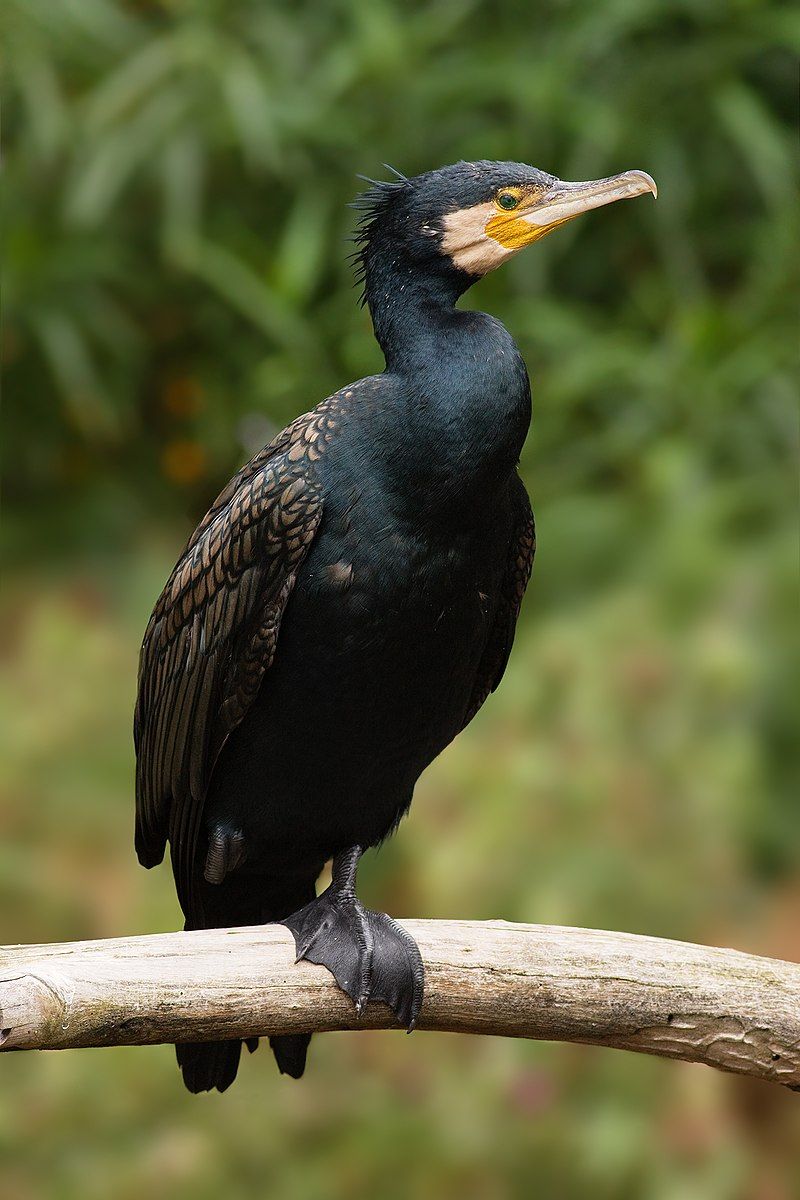
The great cormorant is a species of seabird that is found in many parts of the world, with different names depending on the region it is found.
In New Zealand it is commonly referred to as the black shag or kawau, while in the Northern Hemisphere, it is often referred to as the great black cormorant. In Australia, it is known as the black cormorant, and in India it is known as the large cormorant.
This species of cormorant is highly adapted to living in, and around, aquatic environments, and is able to dive to depths of up to 10 meters in order to find food. It is a member of the cormorant family of seabirds and is known for its large size and distinctive black feathers.
The great cormorant is an important species in many coastal areas and is an important part of the marine ecosystem.
| Kingdom | Animalia |
| Phylum | Chordata |
| Class | Aves |
| Order | Suliformes |
| Family | Phalacrocoracidae |
| Genus | Phalacrocorax |
| Species | P. carbo |
16. European Shag
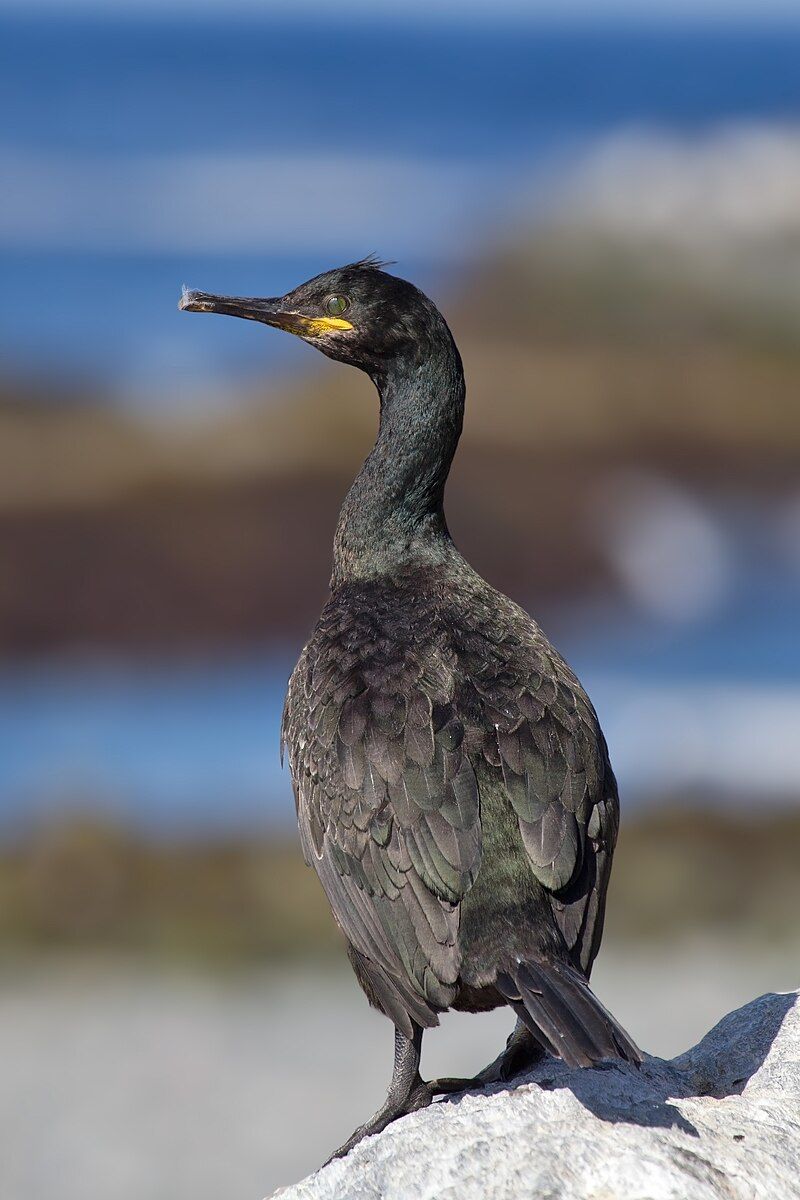
The European shag, also known as the common shag, is a species of cormorant that is the only member of its monotypic genus, Gulosus. This type of bird is found mainly in the rocky coasts of western and southern Europe, southwest Asia, and north Africa.
During the winter months, most of the birds remain in their breeding range, except for the northernmost birds, which migrate south to a warmer climate. The European shag has a grey-brown plumage with a white neck patch, and its habitat consists of rocky cliffs and islands near the coast.
It feeds primarily on fish, which it catches by diving into the water and swimming underwater.
It builds its nest in large colonies on the cliffs and can be seen in large numbers in some areas. The European shag is listed as a species of least concern by the International Union for Conservation of Nature (IUCN).
However, its population has declined in some areas, such as the Baltic Sea, due to human activities, such as overfishing and pollution. Conservation efforts have been put in place to help protect this species and its habitat.
| Kingdom | Animalia |
| Phylum | Chordata |
| Class | Aves |
| Order | Suliformes |
| Family | Phalacrocoracidae |
| Genus | Gulosus |
| Species | G. aristotelis |
17. Red-Billed Chough
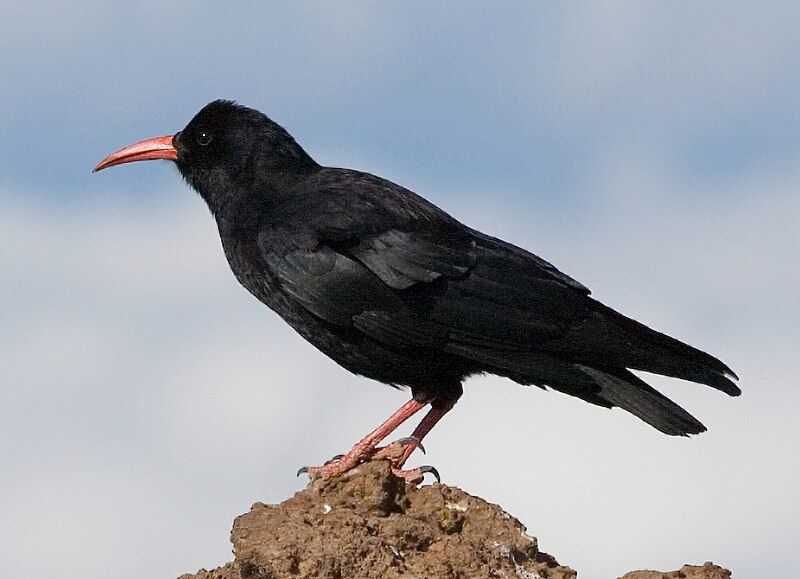
The red-billed chough, also known as the Cornish chough or simply chough, is a species of bird in the crow family. It is one of only two species in the genus Pyrrhocorax and is mainly found in parts of Europe and Asia.
The red-billed chough is a medium-sized bird, with a long tail and a distinctive red-colored bill. It has glossy black plumage on its head, neck, chest and wings, and white feathers on its belly and lower back.
The red-billed chough feeds mainly on insects, seeds, and small invertebrates. In some areas, it also eats grain, fruit, and other plant material. It often forages in flocks, and often follows larger birds such as gulls, ravens, and crows to scavenge food.
It is an agile flyer and is known for its acrobatic aerial displays. The red-billed chough is very social and often forms breeding pairs for life. It builds bulky nests of sticks and twigs, which are often lined with feathers, grass and moss.
The red-billed chough is listed as an endangered species in some parts of its range, due to habitat loss and other human activities. Conservation efforts are underway to protect this unique species.
| Kingdom | Animalia |
| Phylum | Chordata |
| Class | Aves |
| Order | Passeriformes |
| Family | Corvidae |
| Genus | Pyrrhocorax |
| Species | P. pyrrhocorax |
18. Northern Fulmar
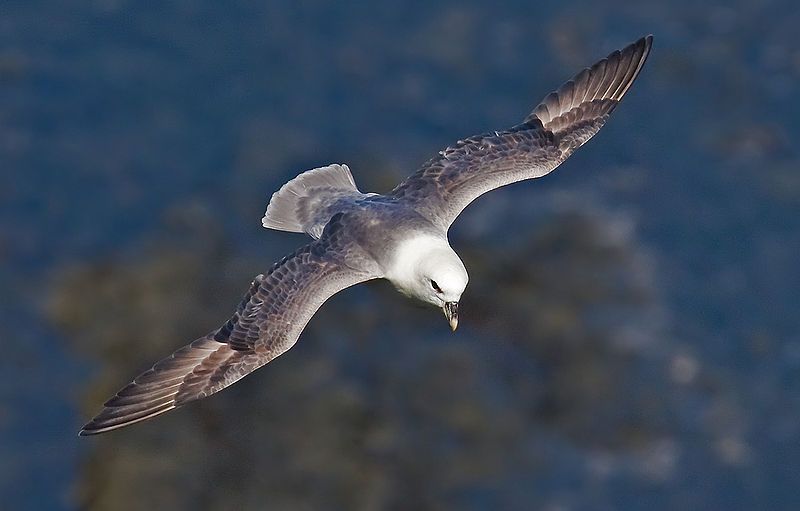
The northern fulmar is a species of seabird found in the subarctic regions of the North Atlantic and North Pacific oceans. It is an abundant species and a popular sight for bird watchers.
Despite its overwhelmingly northern range, there has been one recorded sighting of a northern fulmar in the Southern Hemisphere. In 2002, the bird was seen south of New Zealand, making it the only confirmed sighting of this species in the Southern Hemisphere.
This sighting is an interesting phenomenon because it shows that the bird may be able to adapt to a wide range of climates and environments. It also suggests that the northern fulmar may be capable of migrating to the Southern Hemisphere and establishing new populations there.
Further research is needed to understand the implications of this sighting and the potential of the northern fulmar to expand its range.
| Kingdom | Animalia |
| Phylum | Chordata |
| Class | Aves |
| Order | Procellariiformes |
| Family | Procellariidae |
| Genus | Fulmarus |
| Species | F. glacialis |
19. Cetti’s Warbler
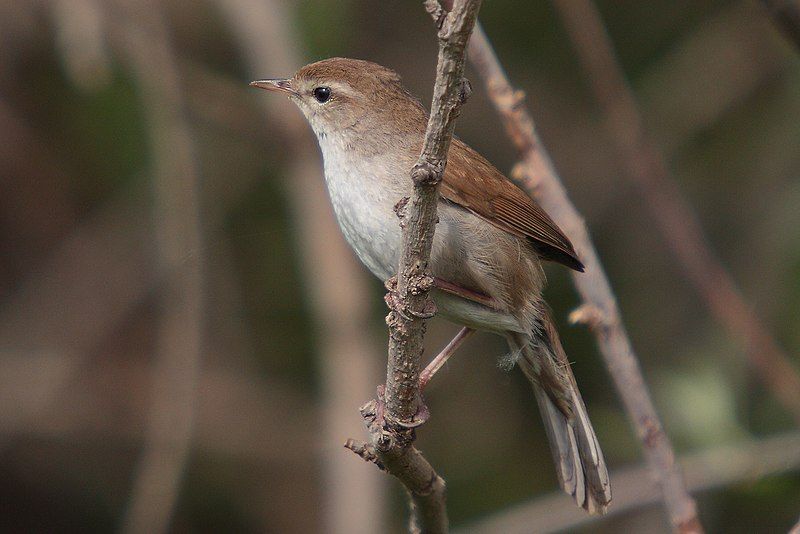
Cetti’s warbler is a species of small, brown bush warbler which is found in various regions of the world. It is found throughout southern and central Europe, as well as in northwest Africa and the east Palearctic.
This species is even known to be found in Afghanistan and northwest Pakistan. Both sexes of the species are alike in appearance, making it difficult to tell them apart. This species of bird is named after the 18th century Italian zoologist, Francesco Cetti.
He was a noted zoologist who made many contributions to the study of the natural world during his lifetime. He was particularly interested in birds, and his name was given to the Cetti’s warbler to commemorate his work.
He is remembered for his dedication to the field of zoology and his important contributions to the study of birds.
| Kingdom | Animalia |
| Phylum | Chordata |
| Class | Aves |
| Order | Passeriformes |
| Family | Cettiidae |
| Genus | Cettia |
| Species | C. cetti |
20. Kentish Plover
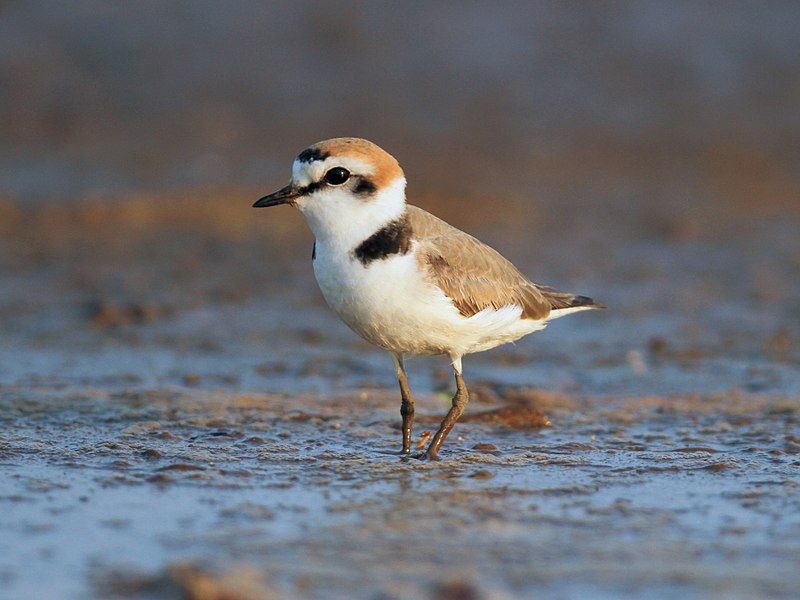
The Kentish Plover is a small bird that is found around the world and belongs to the family Charadriidae. It is a shorebird that breeds in a variety of habitats, including the shores of saline lakes, lagoons, coasts, sand dunes, marshes, semi-arid deserts and tundra regions.
They have adapted to living in a wide variety of environments, making them one of the most cosmopolitan of all shorebirds. The Kentish Plover is a fairly small bird, measuring around 17-18cm in length.
It has a brownish-grey back, a white underbelly and a black head with a white stripe from bill to throat.
It is well adapted for its habitat, with long legs for wading in the water and long, pointed wings for efficient flying. The Kentish Plover is an omnivore, feeding on a variety of invertebrates, including insects, crustaceans, mollusks, and worms, as well as some plant material.
When breeding, they tend to be monogamous, forming long-term pair bonds and nesting in small colonies.
They are ground nesters, laying their eggs in shallow scrapes in the sand or soil. The Kentish Plover is an important species for conservation, as its populations are declining in some areas due to a variety of factors, including habitat destruction, predation, and human disturbance.
As such, it is listed as vulnerable by the IUCN Red List and is protected in many countries.
| Kingdom | Animalia |
| Phylum | Chordata |
| Class | Aves |
| Order | Charadriiformes |
| Family | Charadriidae |
| Genus | Charadrius |
| Species | C. alexandrinus |
21. Merlin
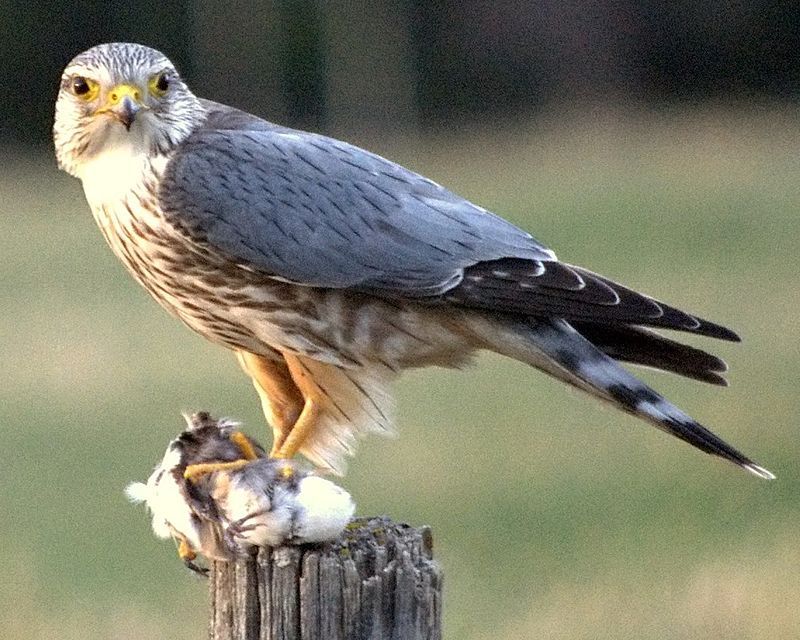
The merlin is a small species of falcon found in the Northern Hemisphere. It is native to both North America and Eurasia, and there are many subspecies of the merlin in both regions.
The merlin is about the size of a crow, with a wingspan of up to 40 inches, and is mainly brown in colour with some lighter or darker streaks on its back and wings. They are powerful flyers and can easily reach speeds of up to 50 miles per hour.
They primarily feed on small birds, such as sparrows, and will also sometimes eat rodents and insects. Merlins are solitary birds and are usually found in open areas such as grasslands and tundra.
They typically build their nests in tall trees or on cliff ledges, and the female will lay up to five eggs in each nest. Merlins are a protected species and their populations are stable or increasing in much of their range.
| Kingdom | Animalia |
| Phylum | Chordata |
| Class | Aves |
| Order | Falconiformes |
| Family | Falconidae |
| Genus | Falco |
| Species | F. columbarius |
22. Zitting Cisticola
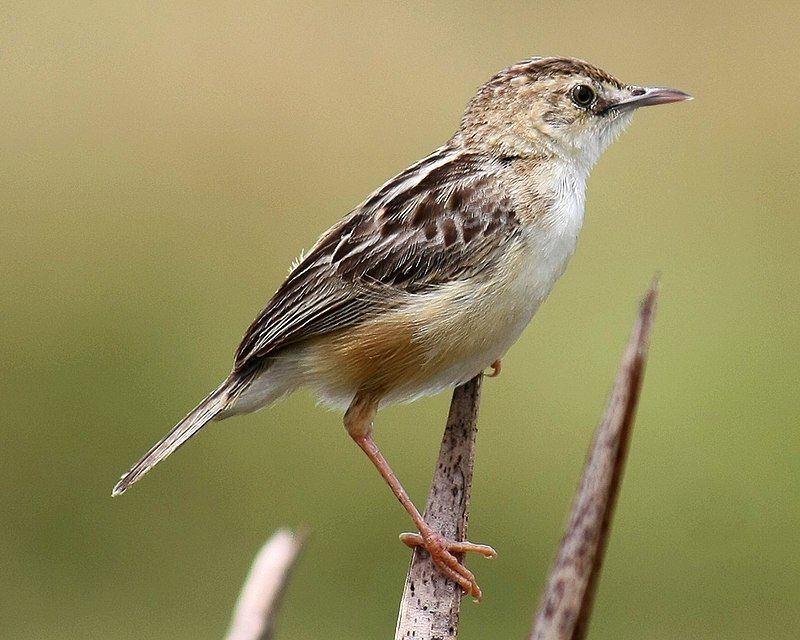
The zitting cisticola, also known as the streaked fantail warbler, is a species of Old World warbler. This species has a wide range of habitats it inhabits, stretching from southern Europe all the way to northern Australia.
In Africa, this warbler is found in both savanna and woodland regions.
In southern Asia, its range extends from the Himalayas to the Indian Ocean coasts, while in Australia, its range covers the tropical north and the south-east coast. This species is a small bird, typically measuring between 11 and 12 cm in length.
Its plumage is mainly grey-brown, with white and black streaking on the back and tail. The underside of its body is mainly white, with darker streaks. The head has a distinctive yellow crown, and the wings are black with white tips.
In addition, males have a bright yellow throat and breast. During the breeding season, the zitting cisticola builds a cup-shaped nest made of grass and other plant material. This nest is typically built in a tree or shrub, and the female lays up to four eggs.
These eggs are incubated for around two weeks before hatching.
The young birds are fed by both parents, and after around two weeks they are able to fly and become independent. The zitting cisticola primarily feeds on insects, which it catches by perching on low branches and foliage.
It will also take berries, seeds, and other small invertebrates. During migration, the species may also make use of bird feeders in urban areas. Overall, the zitting cisticola is a widely distributed species that has adapted to a range of habitats.
Its range extends from Europe all the way to northern Australia, and it is able to live in both savanna and woodland regions. Its breeding behavior is typical of most warblers, and its diet consists mainly of insects and other small invertebrates.
| Kingdom | Animalia |
| Phylum | Chordata |
| Class | Aves |
| Order | Passeriformes |
| Family | Cisticolidae |
| Genus | Cisticola |
| Species | C. juncidis |
Conclusion
Birds of Brittany are a diverse and fascinating group of species, with a wide variety of habitats and behaviors. From the majestic white-tailed eagle to the diminutive chough, these birds are a delight to observe and an important part of the region’s ecology.
The conservation and protection of these species is essential to ensure that they continue to thrive in their natural environment.